#isabel luisa princess of beira
Explore tagged Tumblr posts
Text
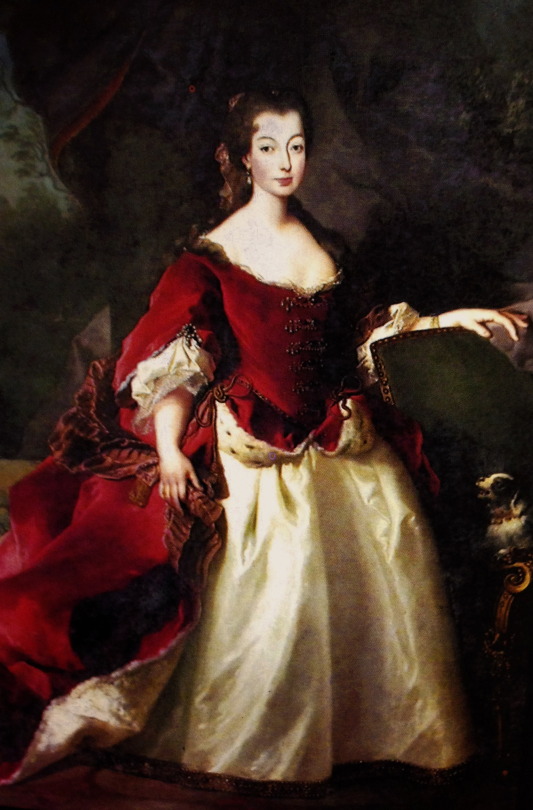
Isabel Luísa was born on the 6 January 1669 in Lisbon, the first and only daughter of king Peter II of Portugal and Maria Francisca of Savoy. Her mother passed away on the 27 of December 1683, and Pedro later remarried by proxy on the 2 of July 1687.
Her birth occurred during a particularly turbulent period for Portugal: the kingdom was still reeling from the misrule of Afonso VI (who had reigned since the 6 of November 1656) and the persistent grievances of his wife, Maria Francisca (whom he had married in 1666), regarding his "sexual incapacity". Of the 55 witnesses gathered on the matter, two primary explanations emerged: first, a childhood riding accident that had left Afonso in poor health; and second, allgeations of his intimate inclinations towards certain male companions.
These events set in motion a prolonged scheme to depose Afonso and thransfer the throne to Peter, who, at the time, was engaged in an affair with Maria Francisca. The first step was securing the annulment of Afonso and Maria's marriage, which was duly granted — the papal bull authorising it arrived in Lisbon on the 27 March 1667. On the 22 November that same year, Afonso was coerced by Maria and Peter into relinquishing power, after which he was exciled to Terceira Island, in the Azores, forcibly cut off from both family and courtly company.
Against this turbulent backdrop, Isabel's birth played a crucial role in easing tensions. Yet, divisions persisted within the Braganza family, particularly concerning Catherine of Braganza, who was deeply dismayed that her brother [Peter] had usurped Afonso's throne. She condemned the entire affair as "morally unacceptable" and strongly disapproved Maria Francisca, whom she regarded as arrogant and power-hungry. Consequently, Catherine refused o serve as Isabel's godmother. In stark contrast, Isabel's godfather was none other than Louis XIV of France, who, through his ambassador, the Abbé of Saint-Romain, presented her with an exquisite jewel adorned with over 10,000 diamonds.
During her early years, Isabel was personally educated by her mother, as Maria trusted no one else with her daughter's upbringing due to past conflits. This choice proved highly eneficial to Isabel's development, as evidenced by a letter from Francisco Correia de Lacerda, secretary of State, to Duarte Ribeiro de Macedo, the king's economist and legal adviser. In it, Francisco noted:
"The Queen had gone out (...) and took the Infanta with her, which brought great joy to the people."
On 27 January 1674, at the age of five, Isabel was formally sworn in as presumptive to the throne. From then on, her education reflected the expectations placed upon a future monarch. She was fluent in french — her mother tongue — from an early age and later mastered italian and spanish. Her studies also encompassed latin, and she developed a profound passion for both national and internacional history.
As expected, alonside her literary and philosophical studies, Isabel received a rigorous religious education. She also learned to play the harpsichord and perfected the art of courtly dance. Yet, what truly captivated her from an early age was physical activity, particularly hunting. From childhood, she would accompany her father and his close companions on hunting expeditions — an enthusiasm that remained with her throughout her life.
Isabel was frequently likened to the roman goddess Diana, not only for her passion for hunting but also for her unmatched beauty. Some artists portrayed her in paintings and engravings as a nymph or, as mentioned earlier, as Diana herself. This left many courtiers astonished, for they could hardly believe that the model in these works was, in fact, Isabel.

According to António Caetano de Sousa, a clergyman and historian, Isabel possessed:
"(...) a remarkable nature and an extraordinary beauty, which only became more radiant with age, accompanied by great virtues. She was of a gentle disposition, naturally affable, with a keen intellect, to which she added prudence, devotion, and piety. So admirable was her character that no one ever had reason to complain of her — on the contrary, she took great care to honour all those around her, earning universal admiration. Her royal presence brought joy to the people whenever she allowed herself to be seen in public (...). She was a tall princess, some what slender but well-proportioned, with striking teeth and an air of majesty — so much so that she was among nature's finest creations. To this, she added a natural kindness, a pious and generous heart, which made her universally beloved by both the nobility and the common people."
One of the matters for which Isabel is chiefly known is the protracted Marriage Treaty, negotiated on her behalf (lasting from 1679 to 1682), wherein it was Peter who undertook the negotiations, though ever under the scrutiny of the Councill, for his brother [Afonso], though exiled, yet lived still in the Azores. Amongst the suitors entertained was Victor Amadeus of Sardinia, Duke of Savoy and future King of Sardinia, who was first cousin to Isabel. The ouset of this matrimonial affair was not most auspicious: a proihibition was enshrined in one of the fundamental laws institued by the Cortes de Lamego, whereby it was declared that "heiresses princesses might not wed foreign princes, and that should such a union be contracted, all thir descendants would be precluded from succession to the crown". Peter petitioned for the establishment of a legal doctrine to justify the necessity of such a union. Thus, on the 1st of November 1679, an assembly was convened, at which was present also the Junta dos Três Estados (the central portguese administrative boudy, entrusted with matters o military and foreign affairs), was also present, and a dispensation was granted for the marriage, albeit with the proviso that Victor should take up residence in Portugal, naturalising his abode and attending to the portuguese crown.
In the final instance, Victor despatched his ambassador to Portugal so as to undertake the necessary preparations for the nuptials. On the 1st June 1679, General Pedro Jacques de Magalhães, together with his fleet of eight ships, bore with him the procuration signed by Isabel, authorising him to receive Victor and thence to convey him to Portugal, fulfilling all due formalities. Upon their arrival in Turim, Victor's mother, Marie Jeanne Baptiste of Savoy-Nemous, declared her son to be indisposed and thus incapable of making the voyage to meet his intended bride. From that moment forth, the matter of the marriage was abandoned with Peter choosing to desist from further negotiations.
It is believed that the true cause of the marriage's failure lay in the House of Savoy's fear of the preponderant influence of Louis XIV, whose chief interest was the annexation of Piedmont to the French realm—a design which might have been accomplished through the unconditional support of the Portuguese crown. Louis himself evinced a willingness to enter into a treaty with Portugal regarding the Duchy of Savoy, yet the Portuguese crown, maintaining its stance of neutrality, refused to assent. From thenceforth, both the Portuguese and the French endeavoured to procure a suitable match for Isabel, yet all efforts were in vain. The following suitors were proposed: Louis, Grand Dauphin; Charles II of Spain; Ferdinando de’ Medici, Grand Prince of Tuscany; Ranuccio II Farnese, Duke of Parma; Joseph I, Holy Roman Emperor; Louis Armand II, Prince of Conti; Maximilian II Emanuel; and Charles III Philip, Elector Palatine. Isabel was, as all princesses and infantas, a mere piece upon the board of international politics, and among the people, she came to be known as “The Ever-Betrothed".
On the 12 September 1683, following the death of her uncle and the complete transfer of absolute power to Peter, Isabel was elevated from Infanta to Princess of Beira. Alas, Maria passed away on the 27 November 1683, leaving Isabel only 14 years of age. These were months of deep mourning and sorrow, to the extent that Peter refused to remarry. However, under pressure from Pope Innocent XI and the Council of State, he was compelled to take as his wife Princess Maria Sophia of Neuburg. With the birth of the future King of Portugal, João V, Isabel was no longer the presumptive heir, and the urgency of securing a final suitor was relegated to a secondary concern—indeed, there had even been consideration of negotiating a marriage with her godfather, Louis XIV, who had recently become a widower.
In 1690, Isabel contracted smallpox, which, due to the medication administered to her and her consistently weakened immune system, developed into tuberculosis, leaving her in a state of frailty and perpetual illness. From that moment onward, the Princess knew that her time was drawing near, and she took it upon herself to arrange her funeral and the management of her estate. Her will attests to the great compassion she bore, as she requested that the majority of her wealth be allocated to the less fortunate and that her wet nurses be granted their freedom. In its final passages, Isabel apologised to Peter for failing to fulfil the royal duty of providing grandchildren and securing the future of the Portuguese crown, as well as for not fully discharging the responsibilities expected of her as a princess. She passed away on the 21 October 1690.
#a long long long post#i've been thinking about isabel and how beautiful she was#she deserved to live longer#isabel luisa princess of beira
5 notes
·
View notes
Photo

Infanta Isabel Luísa of Portugal, Princess of Beira.
#isabel luisa of portugal#house of braganza#Infanta Isabel Luísa of Portugal#Princess of Beira#17th century#long live the queue
27 notes
·
View notes
Text
Maria Francisca de Saboia, Queen of Portugal (Wife of King Afonso VI)
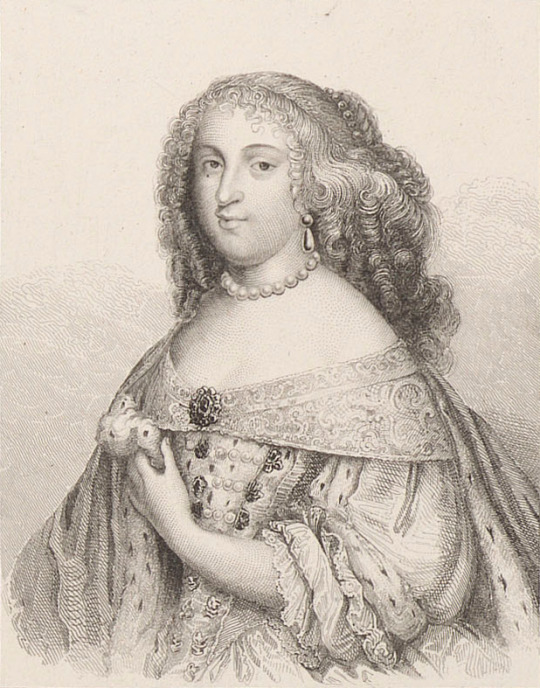
1st Tenure: 2 August 1666 – 24 March 1668
Maria Francisca of Savoy (21 June 1646 in Paris – 27 December 1683 in Lisbon) was twice queen consort of Portugal as the spouse of two Portuguese kings: Afonso VI and Pedro II of Portugal. She first became queen of Portugal at the age of 20 on the day of her marriage to Afonso VI; because the marriage was never consummated, she was able to obtain an annulment. On 28 March 1668, she married Afonso's brother, the Infante Pedro, Duke of Beja, who was appointed prince regent the same year due to Afonso's perceived incompetence. Maria Francisca became queen of Portugal for the second time when Pedro succeeded his brother as Pedro II in 1683 but died herself later that year.
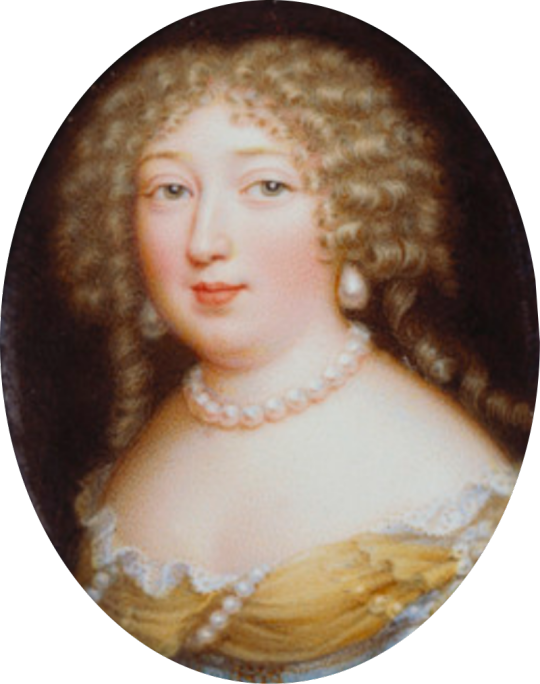
Maria Francisca was born in Paris as the younger daughter of Charles Amadeus, Duke of Nemours,
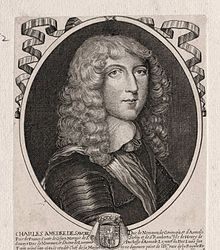
and Élisabeth de Bourbon.

Elisabeth was a granddaughter of Henry IV of France
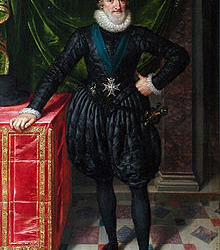
and his mistress Gabrielle d'Estrées.
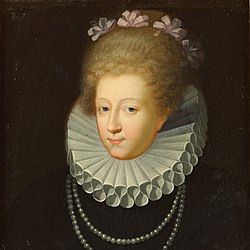
Her only surviving sibling was Marie Jeanne of Savoy.

Prior to marriage she was styled Mademoiselle d'Aumale, a title derived from the duchy of Aumale which was a property of her father.
In 1581, Portugal and Spain had been united under Philip II, but domestic opposition led to the 1640 to 1668 Portuguese Restoration War. By the end of 1665, Spanish attempts to reconquer Portugal had clearly failed, while their finances had collapsed, the Crown declaring bankruptcy no less than nine times between 1557 and 1666.
This allowed Portuguese chief minister, Castelo Melhor, to focus on securing his own position. Afonso VI succeeded his father in 1653 but he was physically impaired and mentally unstable, with government controlled by his mother, Luisa de Guzmán. Guided by Castelo Melhor, Afonso sent her to a convent in 1662, where she died in February 1666.
The Portuguese government was split between pro-French and pro-English factions, respectively led by Castelo Melhor and Afonso's younger brother, Pedro. In 1662, Charles II of England married Afonso's sister Catarina; Castelo Melhor and Louis XIV
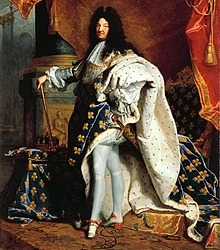
saw a marriage between Maria Francisca and Afonso as a way to offset that. Louis persuaded Charles to agree by providing him with the unpaid portion of Catarina's dowry; Maria arrived in Portugal on 2 August 1666 and the wedding took place the same day.
From then on, she became known as Maria Francisca Isabel de Sabóia, although the marriage proved a disappointment. Afonso abandoned the festivities early, leaving his new bride in charge, and reportedly displayed a similar lack of interest in consummating it. More importantly, Maria was an intelligent and resolute individual, who wanted to serve French interests but also rule; she soon discovered Afonso was controlled by Castelo Melhor, who had no intention of sharing power. This drove her to first co-operate with her brother-in-law Pedro, then allegedly begin an affair with him.
Although Castelo Melhor considered the marriage and the March 1667 Treaty of Lisbon with France as confirming his position, in fact they undermined it. Despite being financially exhausted, the treaty required Portugal to provide military support against Spain, while Maria persuaded Louis that Pedro was a better way to further French interests. In September, Castelo Melhor was forced into exile and in late November, Pedro deposed his brother, sending him to Terceira in the Azores. Maria retired to a convent and asked her marriage be annulled on the grounds of non-consummation; this was approved by her relative, French Cardinal Vendôme,
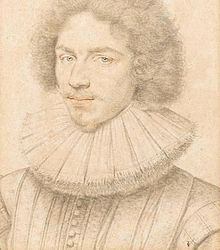
and she married Pedro in September 1668.
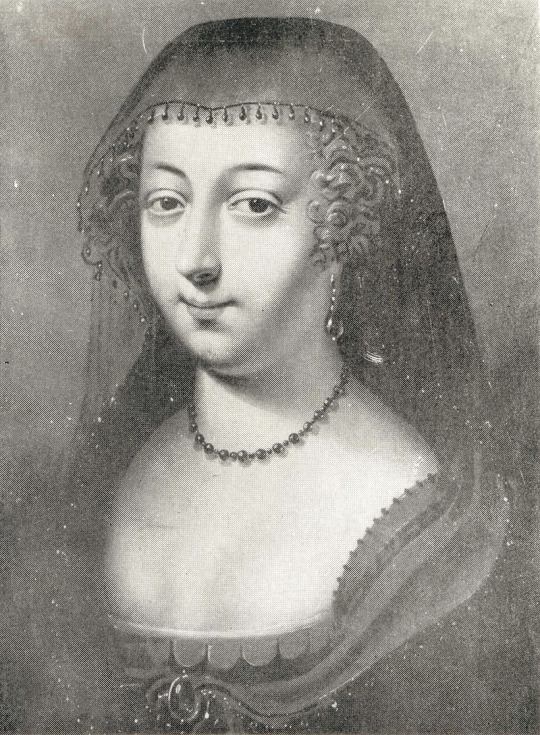
Months after her annulment, Maria Francisca married the Infante Pedro, now the Prince Regent of Portugal. In 1669 she gave birth to a daughter, Isabel Luísa Josefa of Portugal, Princess of Beira.
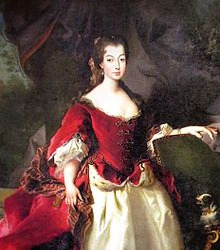
The Bragança dynasty was at the brink of extinction, and Pedro needed heirs, yet Maria Francisca was unable to produce further issue.
When Afonso died in 1683, Pedro succeeded him as Pedro II of Portugal and Maria Francisca became queen again—but died in December of the same year. Maria Francisca's only child, the Infanta Isabel Luísa, died unmarried at age 22. Pedro remarried to Maria Sofia of the Palatinate, who produced the much-needed heir, the future João V of Portugal.
She was first buried at the Convent of the Francesinhas, then moved in 1912 to the Braganças' (or National) Pantheon at the Monastery of São Vicente de Fora.
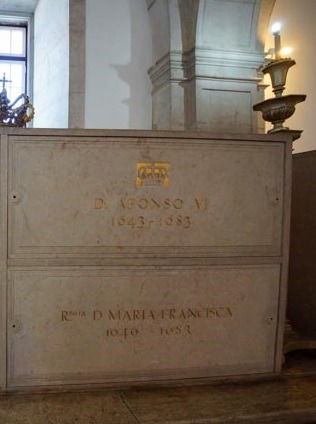
7 notes
·
View notes
Text
23rd King of Portugal (3rd of Bragança Dynasty):King Pedro II of Portugal, “The Pacific”

Reign: 12 September 1683 – 9 December 1706 Inauguration: 27 January 1668 Predecessor: Afonso VI
Pedro II (26 April 1648 inn Lisbon – 9 December 1706 in Alcântara), nicknamed "the Pacific", was the King of Portugal from 1683 until his death, previously serving as regent for his brother Afonso VI from 1668 until his own accession. He was the fifth and last child of João IV and Luisa de Guzmán.

Third son of King João IV and Queen Luisa, he was created Duke of Beja and Lord of the House of Infantado.
Following his father's death, his mother became regent for the new king Afonso VI, Pedro's elder, partially paralyzed, and mentally unstable brother. In 1662 Afonso put away his mother and assumed control of the state. In January 1668, shortly before Spanish recognition of Portugal's restoration of independence, Pedro acquired political ascendancy over his brother and was appointed regent, banishing Afonso to the Azores and, later, Sintra where he died in 1683. Pedro thereupon inherited the throne.
Pedro not only inherited his brother's throne but also wed his former spouse, Queen Marie-Françoise of Savoy (1646–1683). They had one daughter, Isabel Luísa, Princess of Beira (1669–90), who was heir presumptive.
Rule (1668–1706)

Pedro consolidated Portugal's independence with the signing of the Treaty of Lisbon in 1668, putting the Portuguese Restoration War, that began in 1640, to an end. He formed an alliance with England and had its decisive support based on marriage clauses that united Charles II of England with his sister Catherine of Bragança in 1661. Portugal ceded Tangier and Bombay as a dowry, and compromised to transfer to the English the majority of the places recovered from the Dutch, to share in half the commerce of cinnamon, to install English families with the same privileges of the Portuguese families in Goa, Cochin, Diu, Bahia, Pernambuco and Rio de Janeiro. In exchange, England would give Lisbon military support, protecting Portuguese shipments in the Mediterranean and the coasts of Lisbon and Porto.
The English alliance was decisive in the consolidation of Pedro's leadership. He centralized the monarchy's power and dissolved the excessive strength the nobility had gained after the death of João IV in 1656.
His long tenure was one of important accomplishments. In 1671 he conceded freedom of commerce to the English residing in Portugal and began the establishment of textile manufactures. Isabel Luísa was proclaimed heir presumptive to the throne at the Portuguese Cortes of 1674, Pedro promulgating a letter «on the regencies and tutorships of Kings» to better found the rights of his daughter.
In 1674 his main concern was to improve the defenses of the realm, asking for contributions from the Junta dos Três Estados to the keeping of border garrisons, its paraphernalia and indispensable works in castles and forts. The Cortes didn't attend to totality of his request, but the great apprehension was in the coastal defense. «The shipments from India and Brazil were the main object of greed», says Veríssimo Serrão, «History of Portugal», Volume V, page 213, so that «the Crown was obliged to arm a fleet of 11 boats. (...) The squadron left the Tejo on 21 July 1675, under the command of Pedro Jacques de Magalhães. (...) But the results of such a costly undertaking were none.»
There was a legal impediment to the marriage of his daughter with her cousin, the Duke of Savoy. The so-called «Law of the Cortes of Lamego» prevented the marriage of an heiress with a foreign prince. This alleged document became fundamental law of the Realm in 1640. The Cortes, called on 1 November 1679, proceeded with the derogation. By then the ambassador of Savoy, the Marquis of Ornano, had come to Lisbon to celebrate the marriage by proxy. But it would all turn ineffective to the extent that the embassy of the Duke of Cadaval, sent to Turin in May 1682, did not reach or did not finish the project, by pressures, perhaps, of Louis XIV on the dynasty of Savoy.
In 1683 King Afonso VI and Queen Maria Francisca died. In the court there was a strong «French party», headed by the Duke of Cadaval, the then Count of Vila Maior and by the Viscount of Ponte de Lima, but others favored a closer alliance with Spain. By marrying again, Pedro II chose the sister of the Queen of Spain, daughter of Philipp Wilhelm, Elector Palatine.

The new queen, Maria Sophia of Neuburg, never influenced political life, maintaining a low profile. The couple had eight children, including the younger João who succeeded his father in 1706 as King João V of Portugal.
Pedro initially supported France and Spain in the War of Spanish Succession (1701–1714), but on 16 May 1703, Portugal and England signed the Methuen Treaty. This trade accord granted mutual commercial privileges for Portuguese wine and English textile traders and would later give England significant influence in the Portuguese economy. This was followed in December 1703 by a military alliance between Portugal, Austria and England for an invasion of Spain. Portuguese and Allied forces, under the command of the Marquis of Minas, captured Madrid in 1706, during the campaign which ended in the Allied defeat at Almansa.

Pedro obtained papal approval for the elevation of the Bahia bishopric to the category of archbishopric, and the creation of the bishoprics of Olinda and Rio de Janeiro in 1676. In 1677 was created the bishopric of Maranhão, directly subordinated to the archbishopric of Lisbon. In 1686, via decree from the Missionary Regiment, the privileges of the Jesuits in the interior of the Northern region were restricted. There was, however, resistance to the reordering process of the colonial administration, such as the Beckman revolt of 1684 that sublevated the Maranhão colonists against the monopoly of the General Company of Commerce of Grão-Pará and Maranhão and the rise of the Tapuias in the 1680s in various regions of the Northeast.
The discovery of gold in the interior of Caetés, Minas Gerais, in the end of the 17th century, began an age of economic prosperity and administrative changes, with the creation in 1693 of the Captaincy of São Paulo and Minas Gerais, and the Intendancy of Minas Gerais in 1702. It also dates from the period the destruction of the Quilombo dos Palmares, Alagoas, in 1695.
The King fixated the basis of his Brazilian policy in two main points: the research of precious metals and stones and the expansion of the borders of the colony to the banks of the Río de la Plata. He sent the Viscount of Barbacena to Brazil with instructions to encourage the mining explorations. The reputation of the Paulistas was such that, urged by Barbacena, Pedro wrote to twelve frontiersmen Piratinganos, and provided them with the "incomparable honor" of a direct interpellation, summoning them to place their employment at the royal service.
Under his reign was created the Casa da Moeda do Brasil, inaugurated on 8 March 1694. The King ceded his seigniorage rights, tribute owed to him, in favor of the better functioning of this institution, that coined the first Brazilian coins for usage within the colony. These coins of 2,000 and 4,000 réis in gold, and 640, 320, 160, 80, 40 and 20 réis in silver amplified and diversified the circulating midst in Brazil.
By the end of Pedro's reign, there were two big problems in Brazil: the dispute over the Colónia do Sacramento that, even though since 1680 recognized as Portuguese territory, was occupied by the Spanish in 1705, and the first conflicts between Paulistas and Emboabas, competing outsiders, including metropolitan people, who arrived in the region of the mines in search of gold.

Since 1703 the King went through times of deep drowsiness that doctors attributed to a «downflow of "estilicido"», i.e., severe infection of the larynx. On 5 December 1706 he was stricken with a «legitimate pleurisy», that derived a seizure, with which he lost consciousness. The bloodletting from his feet didn't yield results, and on 9 December, the attack became fatal. It is believed nowadays that the King suffered from a liver disease, because the autopsy found «a part of his liver twisted where 25 stones in the gall would be found.»

He was the last surviving child of João IV of Portugal, and is buried in Lisbon, in the Pantheon of the Braganças.

Historian Veríssimo Serrão says of The King in his «History of Portugal», Volume IV, page 233:
«A coeval historian extolled his physical qualities, skilled both in arms as in horseback bullfighting, having an agility and strength that predisposed him to the exercise of violence. It was during his time that the Palace of Salvaterra de Magos became again the favorite place of court, Pedro II settling there in the months of January and February, to devote himself to the sport of riding. (...) Master of a great memory, the monarch never refused an audience to whoever asked it, was it day or night, delighted to listen to others and to discuss the issues in the smallest details. This quality was (...) one of his biggest flaws, because he always wanted to hear the opinion of advisers, fact that led to him dilating the problems. His reign had as a great aim to rebuild the country, shaken by the wars of Restoration. Since 1693 he could dispose of the gold from Brazil that gave to this work the decisive push that Portugal needed. But the participation in the Wars of the Spanish Succession went against the national interests. (...)».
He was tall, well proportioned, with dark eyes and dark hair.
He earned the nickname “the Pacific”, because peace was made with Spain during his regency, in 1668.

By Marie Françoise of Savoy-Nemours (1646–1683; married 2 April 1668)
Infanta Isabel Luísa of Portugal (6 January 1669 - 21 October 1690) 3rd Princess of Beira
By Maria Sophia of Neuburg (6 August 1666 – 4 August 1699; married in 1687)
João, Prince of Brazil (30 August 1688 - 17 September 1688) Prince of Brazil and 12th Duke of Bragança
João V of Portugal (22 October 1689 - 31 July 1750) Prince of Brazil from 1697; succeeded Pedro as King of Portugal
Infante Francisco of Portugal (25 May 1691 - 21 July 1742) Duke of Beja
Infante António of Portugal (15 March 1695 - 20 October 1757)
Infanta Teresa Maria of Portugal (24 February 1696 - 16 February 1704)
Infante Manuel of Portugal (3 August 1697 - 3 August 1766 ) Count of Ourém.
Infanta Francisca Josefa of Portugal (30 January 1699 - 15 July 1736)
By Maria da Cruz Mascarenhas (c. 1655-?)
Luísa de Braganza (9 January 1679 - 23 December 1732) Natural daughter; Duchess of Cadaval through marriage first to Luís Ambrósio de Melo, 2nd Duke of Cadaval, and then to Jaime Álvares Pereira de Melo, 3rd Duke of Cadaval
By Anne Armande du Verger (c. 1660-?)
Miguel of Braganza (15 October 1699 - 13 January 1724) Natural son
By Francisca Clara da Silva (c. 1650-?)
José de Braganza (6 May 1703 - 3 June 1756) Natural son; Archbishop of Braga
5 notes
·
View notes